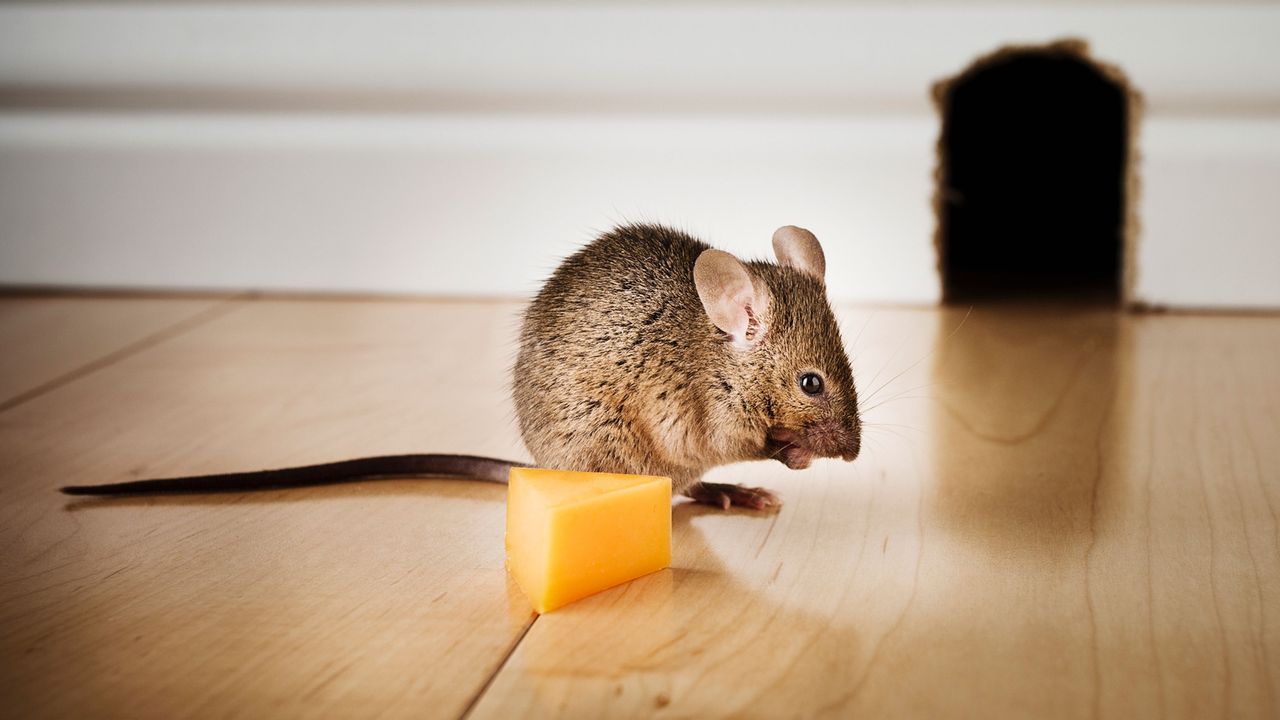

Want to know how to get rid of mice? Even if you're one of those people who think mice are cute, here's why you'll want to be shot of them.
Mice are destructive, gnawing their way through everything from food packaging to electrical cables. They are incontinent, urinating constantly and leaving up to 80 droppings a day around the house.
They breed rapidly, with a single couple able to produce up to 200 (you heard us) offspring within a year. And they harbour parasites that can spread diseases, including salmonella, meningitis, encephalitis and tapeworms to us.
If you're not too sure what infestation you're dealing with, take a look at our how to get rid of pests guide to help identify your unwelcome guests.
Martha Stewart explains more about mice and their habits: 'October through February is the peak time for mice to enter the home. Mice droppings, nests, evidence of gnawing, stale odors, footprints, and, of course, mouse sightings are evidence of an infestation.'
Before you start, it's worth knowing that it's not that easy to get rid of mice once they're in. So, if you've noticed one mouse just the once, and you take the measures suggested below, you might be lucky and knock the problem on the head quickly.
If you're just getting round to sorting an on-going mouse problem, you may find that the only way to get rid of them is to call in professionals.
Convinced that you want to get rid of a mouse problem – and fast? Read on to discover how.
1. Spot the signs of a mice infestation
The key to finding out how to get rid of mice is all in spotting the signs of your infestation first. Luckily (or not) it's pretty evident when you have a rodent infestation on your hands.
Droppings are your biggest clue – they're not big but they're likely to gather in one particular area, which will be where your mice are finding food. That's not the only sign, though. Look for where mice have gnawed through anything from furniture to food packaging. This is a key part of removing mice from a garage, too, as this space is often used for storage.
Have a look for rodent infestation signs with this short list.
- A very strong ammonia stench;
- Audible scrabbling noises;
- Grease marks on walls and skirting boards as they brush against them;
- Foot and tail prints in dusty areas, such as basement or attics;
- Rats leave dark, pellet-like droppings, while mice droppings are smaller and spindle shaped.
2. Stop mice from getting in in the first place
Start by mouse-proofing your home – in other words, stop them getting in. There might be some obvious cracks around door frames, drainage pipes, across an airbrick or drains that you can block up, but you should know that mice can squeeze through the smallest of gaps – if you can fit a pencil into the crack, a mouse can get through it.
Where airbricks are the only obvious point of access, fixing a fine wire mesh across them might slow them down. Otherwise, use steel wool and caulking to block gaps and cracks – or weather strips around doors – mice will chew through plastic, rubber and wood pretty quickly, so keep an eye on any previous fixes you've made.
Bear in mind that gaps in floorboards mean that mice beneath the house can get up into ground floor rooms, too.
Learn how to repel mice from your home to nip the problem in the bud before it even starts.
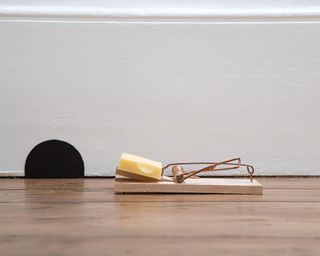
3. Lay mouse traps and bait
How to get rid of mice? Buy more traps than you think you'll need – at least six. Ideally you want to catch all of the mice in the first few days, rather than let their population build up.
Now to the traps themselves – and this might take some stomaching. Snap traps with glued down bait might see off a light infestation, but laying glue traps or poisonous traps might be needed for bigger invasions. Electronic mouse traps will kill the mice quickly and (some would say) humanely.
There are also humane mouse traps, where the mouse is trapped in a little cage to await release – but, of course, you have to be confident that the mice can't get back in if you don't want your infestation to continue. If you are using live traps, make sure you release the mice as far away from your home (or anybody's home, for that matter) as possible.
If you are going to use a poisonous trap, ensure they're in sealed bait stations, that the stations are behind or under furniture (i.e. out of reach of children/pets), that you only use the poison indoors (ditto), that you wear disposable gloves when handling it, that any extra poisonous traps are stored out of reach, and that you wash your hands after use.
If you do lay traps, lay plenty of each different type to up your chances of catching the mouse/mice.
Warning: Bear in mind safety issues if you have pets or small children. Martha Stewart recommends: 'If you decide to use rodenticides and you have pets and/or small children, purchase a tamper-proof bait station.'
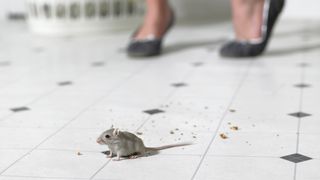
4. Know where to put the mouse traps
Mice run along walls, so putting the traps next to the walls, with the trigger section facing the skirting board, will mean they run straight to the bait, ensuring they're more likely to be captured properly. Putting them behind furniture is a good idea, too.
Place the traps in the rooms where you've seen the mice (or droppings) – they don't tend to stray further than 3m to 6m from their preferred food source. Move the traps about the space every couple of days – rats will avoid them but mice are nosey.
Martha Stewart recommends the following: 'Set out the traps unarmed, with bait, for a few days to let the mice get used to eating food from them. For bait, use peanut butter mixed with rolled oats, raisins, or bits of whole-grain bread.'
Check the traps at least twice a day to remove trapped mice quickly.
5. How to get rid of mice without killing them
If you can't bear the idea of setting traps, you might like to try a natural method – although they're likely to be less effective, giving the mouse population more time to build up.
Still interested? Mice apparently dislike some strong smells, with peppermint essential oil, moth balls, ammonia and cat litter both known to be deterrents.
Peppermint oil is probably the safest, most environmentally friendly way to get rid of mice that many people report to actually work. Simply soak several cotton balls in the essential oil and throw them in the areas mice frequent, such as behind the cooker.
Tumble dryer sheets are another option – try stuffing them into cracks or laying them around the areas they've been known to visit.

6. Cleanliness is key to getting rid of mice
Mice don't need much food to survive – just a few crumbs here and there will keep them going every day. So, if you want to get rid of mice, vacuuming food from floors, wiping down surfaces and cleaning out cupboards will discourage them in the first place.
This cleanliness, it goes without saying, extends to their droppings too. But cleaning up mouse droppings quickly isn't just about hygiene – the presence of droppings (or lack of them) is the biggest clue you might get as to whether you're still living with mice.
- Is your vacuum on its last... er... legs? Take a look at the best vacuum cleaners to keep your home a crumb-free zone.
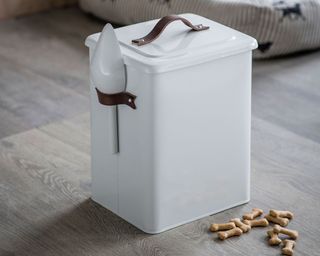
7. Hide food away to get rid of mice
Storing food that's likely to leave crumbs in lidded, sturdy containers – we're thinking cereals, bread, rice, cake, biscuits – will cut down on mice infestations.
Don't leave food waste in open bins (kids are particularly guilty of this kind of behaviour) and ensure your household rubbish, and particularly food bin or recycling, is protected by a fixed lid. And that goes for your pet's food too.
Don't forget, plastic bags won't be enough to keep them at bay.
If you haven't got a lidded kitchen trash bin, check out our favourites in our guide to the best kitchen bins.

8. Don't provide mice with nesting areas
If your home is surrounded by lots of foliage you might, inadvertently, be providing mice with handy places to hide and nest.
Lining the gap between the house and the foliage with a heavy layer of gravel will discourage burrowing, but regularly checking around the outside of the house to remove debris and weeds – and nests if you find them – should mean the mice go elsewhere.
Keeping the garden neat, front and back, will make it easier to spot nests in future.

9. Getting a cat (or a dog) will help get rid of mice
Cats hunt mice – and while you don't want to encourage your cat to be bringing their prizes home to show you, they will discourage the mice from entering in the first place.
Some dogs, terriers in particular, will even get in on the action – and will at least alert you to the presence of a mouse. So if you want to know how to get rid of mice and gain a new family member, this is it.

10. How to get rid of mice with kitty litter
Got that cat? If you scoop out some used unscented kitty litter (when we say 'used', we mean 'urinated on' only), and put the litter into jar.
Next, place the unlidded litter jars where the mice have been entering the house. You can keep an eye on what the mice are doing by monitoring the (hopeful lack of) droppings.
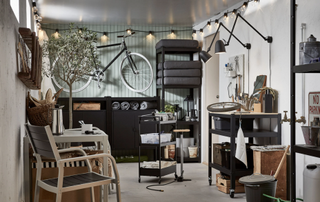
11. Check the garage for mice
You've tried everything, but they're still coming in? What might be happening is the mice are nesting in your garage (or another outbuilding, even a shed), making occasional trips inside for food.
Check all your storage boxes and shelves, and even inside your car – in the boot and under the car hood. Remove anything that could be tempting them and store anything that can be nibbled in plastic storage boxes. They love finding materials for nesting, so keep these out of harm's way.
- Not got your garage in order? Give it a clear out and organise it to avoid any mice from making it their new home with our guide to garage storage ideas.
12. Call in the professionals
If you've tried everything (perhaps, bar the cat) above and you're still seeing mice indoors, it's time to admit defeat before the problem really gets out of hand, with the help of your local pest control company.
Join our newsletter
Get small space home decor ideas, celeb inspiration, DIY tips and more, straight to your inbox!
Lucy is Global Editor-in-Chief of Homes & Gardens having worked on numerous interiors and property titles. She was founding Editor of Channel 4’s 4Homes magazine, was Associate Editor at Ideal Home, before becoming Editor-in-Chief of Realhomes.com in 2018 then moving to Homes & Gardens in 2021. She has also written for Huffington Post, AOL, UKTV, MSN, House Beautiful, Good Homes, and many women’s titles. Find her writing about everything from buying and selling property, self build, DIY, design and consumer issues to gardening.
-
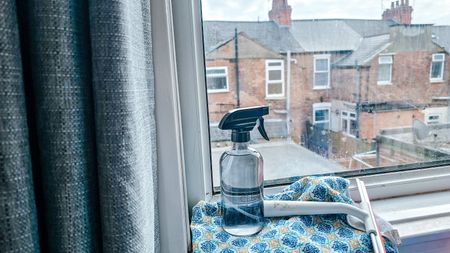 How to clean windows without streaks — 5 easy steps that cleaning pros always follow
How to clean windows without streaks — 5 easy steps that cleaning pros always followThis method on how to clean windows is favored by professional cleaners. We've asked them for the steps you should follow, plus picked cleaning buys
By Eve Smallman Last updated
-
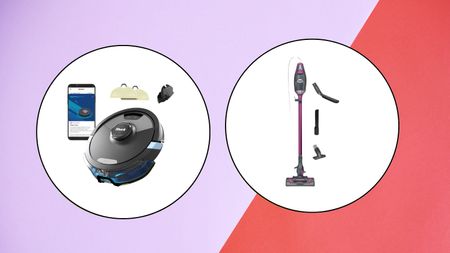 The latest Shark sale deals are perfect for pollen-proofing your home — with up to $150 off our favorite vacuums
The latest Shark sale deals are perfect for pollen-proofing your home — with up to $150 off our favorite vacuumsWe found the latest Shark sale deals on vacuums that are sure to be swooped up, especially as spring blooms trigger pollen allergies and we're in need of extra cleaning
By Danielle Valente Published
-
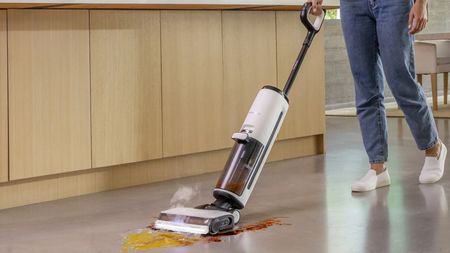
 Tineco Floor One S7 steam wet-dry vacuum review — spotless floors with minimal effort
Tineco Floor One S7 steam wet-dry vacuum review — spotless floors with minimal effortOur contributing editor, Camryn Rabideau, tests the Tineco Floor One S7 steam wet-dry vacuum in her New England homestead property
By Camryn Rabideau Published
-
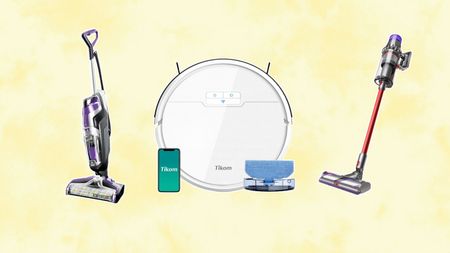 Amazon vacuum cleaners to nab during the retailer's Big Spring Sale — save up to 60% off our go-to small-space finds
Amazon vacuum cleaners to nab during the retailer's Big Spring Sale — save up to 60% off our go-to small-space findsChecking out the savings on Amazon? Vacuum cleaners are a must-buy during their first Big Spring Sale — here are our favorites up to 60% off
By Danielle Valente Published
-
 The Home Edit Walmart cleaning collection has just debuted with finds from $3
The Home Edit Walmart cleaning collection has just debuted with finds from $3Spring cleaning, anyone? The Home Edit Walmart cleaning collection has hit shelves with picks from $3
By Danielle Valente Published
-
 How to clean carpet on stairs — 3 simple steps to a spruced up staircase
How to clean carpet on stairs — 3 simple steps to a spruced up staircaseWant to know how to clean carpet on stairs? Our experts explain the simple steps to a sparkling stairway without too much elbow grease
By Andy van Terheyden Published
-
 The Home Depot backyard and patio cleaning supplies we're stocking up on before spring
The Home Depot backyard and patio cleaning supplies we're stocking up on before springDon't forget the outdoors when spring cleaning — The Home Depot backyard and patio cleaning buys from $11 will assist with tidying up
By Danielle Valente Published
-
 The Shark Detect Pro vacuum and other models are on sale for St Patrick's Day — perfect picks for your spring clean
The Shark Detect Pro vacuum and other models are on sale for St Patrick's Day — perfect picks for your spring cleanWhether you're eyeing the Shark Detect Pro Vacuum or Shark Pet Cordless Stick Vacuum, shop the St. Patty's Day sale for a discount on the best vacuums on shelves
By Danielle Valente Published

